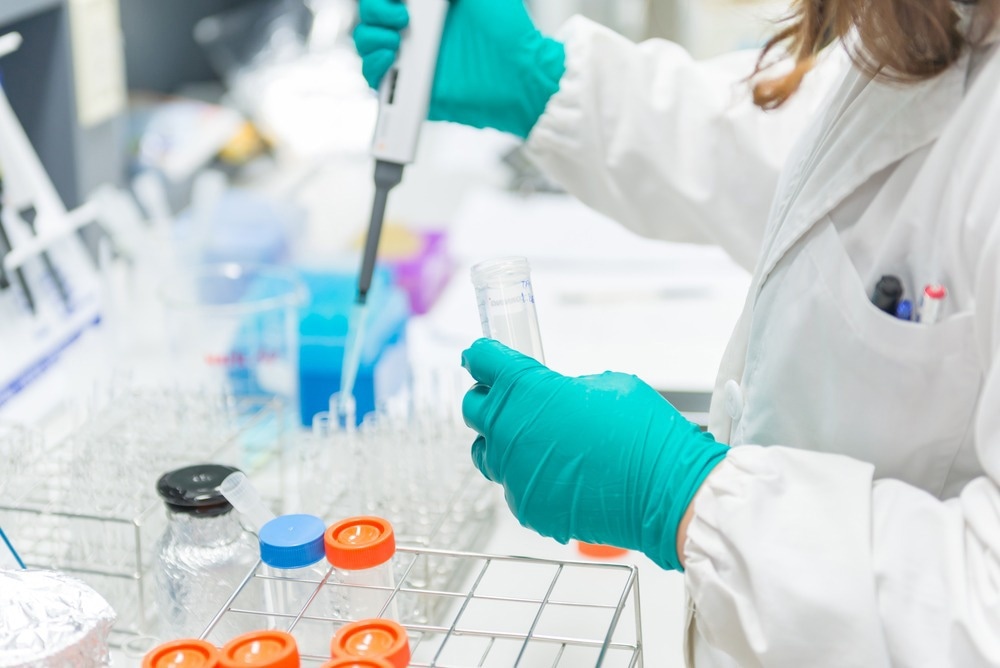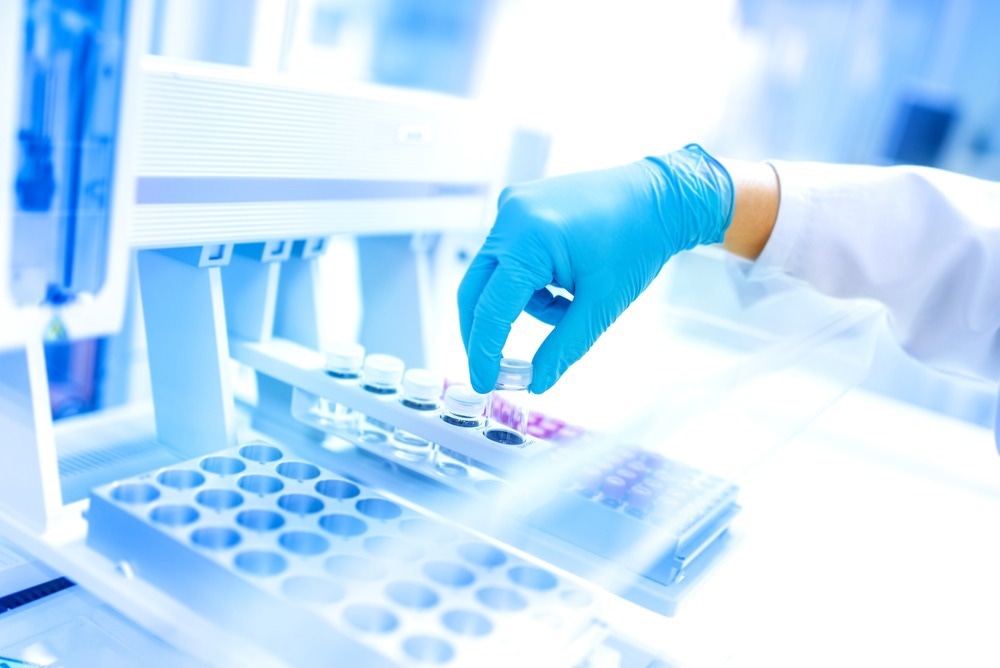Sample preparation is the series of operations performed on a sample before it is analyzed, to eliminate products that might interfere, or to concentrate the analyte of interest.

Image Credit: kittirat roekburi/Shutterstock.com
Depending on the technique used – including multidimensional analysis – and the sample characteristics, several factors must be considered when choosing the sample preparation procedure.
Multidimensional analysis has become an attractive analytical approach that combines two or more separation techniques, such as gas chromatography (GC) and liquid chromatography (LC), to improve the resolution and sensitivity of the analysis.
Compared to conventional 1D separations, 2D gas and liquid chromatography (GC×GC and LC×LC, respectively) offer increased peak capacity and selectivity by using two orthogonal (independent) separation mechanisms. In both GC×GC and LC×LC it is important that the separation achieved in any previous dimension is maintained in the following one.
Sample preparation is an essential step in multidimensional analysis. Samples are made suitable for analysis upon extraction, purification or concentration of analytes from complex matrices, and poor sample preparation can negatively affect the accuracy of the results as well as the sensitivity and reproducibility of the analysis.
Why Does Sample Preparation Matter?
Although the additional 2D separation can improve the analysis with increased sensitivity and selectivity over 1D techniques, it does not justify overlooking the sample preparation method. There are several examples that highlight the importance of sample preparation in multidimensional analysis, with applications in biomedical fields such as proteomics and metabolomics, but also in the analysis of food and plants.
Proteomics is the field that studies proteins and their functions in biological systems. Due to their complex nature, large size, and low concentrations, proteins are often difficult to analyze. Multidimensional analysis techniques have been developed to overcome these challenges; however, high-quality sample preparation is crucial to ensure accurate identification and quantification of proteins.
Methods for two-dimensional gas chromatography and two-dimensional liquid chromatography have also been developed to separate complex mixtures of metabolites and are widely applied in metabolomics. Since metabolites are present in low concentrations and can easily degrade during sample handling, sample preparation is a critical step.
How Sample Preparation Improves the Identification of Aroma Active Compounds
Groundbreaking advances in the sample preparation techniques with GC×GC were achieved following the introduction of solid-phase microextraction (SPME), consisting of fused silica fibers coated with the extraction phase, which are exposed samples before analysis.
In the early 2000s, headspace solid-phase microextraction (HS-SPME) was combined with GC×GC to analyze flavors in garlic cloves. This led to a 10 to 50-fold increase in sensitivity compared to conventional GC, and a 10 times higher peak capacity. The type of fibers used also had an impact on the extraction efficiency. These results paved the way for HS-SPME-GC×GC for detailed flavor analysis.
Another example where sample preparation impacted the analysis outcome is in identifying the molecules responsible for the chestnut-like aroma of green tea. In samples prepared via simultaneous distillation extraction, chestnut aroma compounds showed poor solubility and volatility in the solvents. When HS-SPME was applied as an alternative extraction technique, it was possible to identify eight compounds that promote the formation of the aroma of green tea.

Image Credit: bogdanhoda/Shutterstock.com
Improving the Quality of Multidimensional Analysis in Biomedical Applications
In biomedical research, non-targeted metabolomic analysis with multidimensional techniques is an area in continuous development. One of the most common approaches for sample preparation involves the use of HS-SPME. Sorbent traps and derivatization procedures are also commonly used.
The analysis of steroid metabolites in urine is a challenging task due to the complexity of the matrix and the co-elutions between urinary steroids and other metabolites. While classical GC-MS and LC-MS methods allowed the characterization of a limited number of steroids, GC×GC enabled the identification of 70 compounds from different sources (infants, adults, and rodents).
However, despite the increased resolution provided by GC×GC, in some cases, specific sample preparation was necessary for the determination of specific classes of metabolites. For instance, whereas the derivatization of serum and urine samples with methoxyamine and MSTFA did not allow the separation of lactate and pyruvate adducts, the omission of methoxyamine and the use of one-step derivatization with just MSTFA enabled a successful separation.
In another example, solid-phase extraction cartridges – short, disposable columns filled with porous particles – were used in the GC×GC analysis of drugs in horse and dog urine. The analytes or the fractions of interest were retained in the cartridges after a first solvent elution, and then eluted using a different solvent.
The overall methodology provided lower detection limits compared to classical 1D GC (0.04 mg/L against 0.1 mg/L) with good reproducibility, demonstrating the potential in drug analysis.
The importance of sample preparation was also highlighted in a study aimed at identifying serological biomarkers of Crohn’s disease. Choosing the right extraction solvent and derivatization conditions were crucial for the identification of 33 potential biomarkers in serum, allowing the discrimination of healthy volunteers from three subgroups of patients having Crohn’s disease.
Challenges and Future Perspectives
In summary, it can be agreed that sample preparation is an essential step that not only makes the samples suitable for multidimensional analysis, but can also improve the quality of the analysis itself. The enhanced resolution and sensitivity achievable by two-dimensional gas and liquid chromatography rely on high-quality sample preparation.
There is an increasing demand for low-cost and eco-friendly sample preparation techniques. Solvent extraction methods such as liquid-phase microextraction (LPME) and solid-liquid extraction (SLE) are appealing solutions, especially in pharmaceutical manufacturing, since they can lower the cost of drug development.
In addition, new developments are focusing on sample preparation techniques that enable miniaturization and rapid automatic high-throughput analysis while ensuring increased accuracy and low waste generation.
Sources
Ingle, R. G., Zeng, S., Jiang, H. & Fang, W. J. (2022). Current developments of bioanalytical sample preparation techniques in pharmaceuticals. J Pharm Anal, 12, 517-529.10.1016/j.jpha.2022.03.001. Available: https://www.ncbi.nlm.nih.gov/pubmed/36105159
Adahchour, M., Beens, J., Vreuls, R. J. J., Batenburg, A. M., Rosing, E. a. E. & Brinkman, U. a. T. (2002). Application of solid-phase micro-extraction and comprehensive two-dimensional gas chromatography (GC×GC) for flavour analysis. Chromatographia, 55, 361-367.10.1007/BF02491673. Available: https://doi.org/10.1007/BF02491673
Franchina, F. A., Zanella, D., Dubois, L. M. & Focant, J. F. (2021). The role of sample preparation in multidimensional gas chromatographic separations for non-targeted analysis with the focus on recent biomedical, food, and plant applications. J Sep Sci, 44, 188-210.10.1002/jssc.202000855. Available: https://www.ncbi.nlm.nih.gov/pubmed/33108044
Yu, Z., Huang, H., Reim, A., Charles, P. D., Northage, A., Jackson, D., Parry, I. & Kessler, B. M. (2017). Optimizing 2D gas chromatography mass spectrometry for robust tissue, serum and urine metabolite profiling. Talanta, 165, 685-691.10.1016/j.talanta.2017.01.003. Available: https://www.ncbi.nlm.nih.gov/pubmed/28153317
Further Reading
Last Updated: Sep 18, 2023